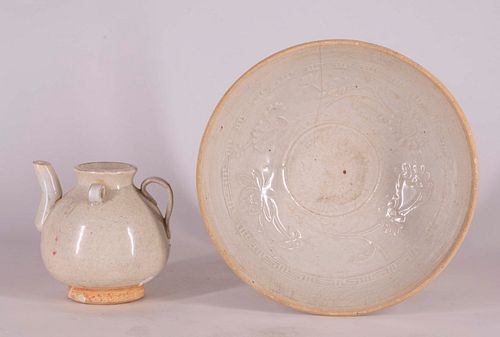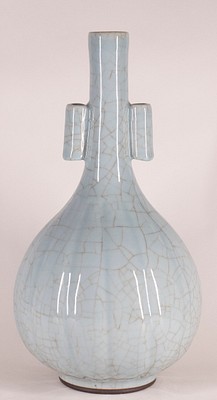White Glazed Cizhou Water Dropper and Bowl
Lot 72
About Seller
Keno Auctions
127 East 69th Street
New York, NY 10021
United States
Keno Auctions is renowned for our expertise in fine and decorative arts. With more than 30 years experience, founder Leigh Keno has established a brilliant team of experts specializing in fine art, furniture, decorative arts and jewelry.
Categories
Estimate:
$300 - $500
Absentee vs Live bid
Two ways to bid:
- Leave a max absentee bid and the platform will bid on your behalf up to your maximum bid during the live auction.
- Bid live during the auction and your bids will be submitted real-time to the auctioneer.
Bid Increments
| Price | Bid Increment |
|---|---|
| $0 | $25 |
| $100 | $100 |
| $2,000 | $250 |
| $5,000 | $500 |
| $30,000 | $2,500 |
| $50,000 | $5,000 |
| $100,000 | $10,000 |
| $500,000 | $10,000 |
| $1,000,000 | $10,000 |
About Auction
By Keno Auctions
Apr 7, 2021
Set Reminder
2021-04-07 09:00:00
2021-04-07 09:00:00
America/New_York
Bidsquare
Bidsquare : Estates and Asian Works of Art
https://www.bidsquare.com/auctions/keno/estates-and-asian-works-of-art-6741
Keno Auctions Leigh@kenoauctions.com
Keno Auctions Leigh@kenoauctions.com
- Lot Description
Probably Song Dynasty (960-1127)
The water dropper with globular body rising from a short straight foot to a broad tapering short neck, with loop handles on the shoulder, covered in a creamy-white slip falling short of the foot to reveal the buff body,the second the second, a bowl with curved sides, the interior decorated with raised flowers, the cream white slip glaze receding from the rim, raised on a foot-rim. (2) Water dropper,
H. 3 3/8 in.
Note: Cizhou wares have body material that is not white, but a variant of greyish-buff in colour. They also share the use of slip, which was used to cover the body material - masking its colour - and could also be used in a range of innovative decorative techniques. The majority of Cizhou wares are covered with a thin, colourless glaze. Developed from Tang dynasty northern white wares, with which they share a signifcant number of shapes.
Provenance: The Song bowl, according the Harry A. Lakin's heirs, successful Brewery owner and Philanthropist, Cecil Norman Colburne Higgins (1856-1911) and his friend and fellow Bedford collector, Harry Austin Lakin (1869-1963) purchased in partnership a collection of European and Asian porcelain in 1897. Lakin was a grandson of the famous potter Thomas Lakin (1769-1821) of the Staffordshire pottery "Lakin & Poole". Higgins liked European porcelain and Lakin preferred Chinese porcelain, the collection was divided accordingly. The pieces which Higgins retained became part of his museum in Bedford, England, The Cecil Higgins Museum, opened in 1949 at the former Higgins home. (Today known as The Higgins Bedford Museum). Upon Harry Lakin's death in 1963, Lakin's portion of the 1897 joint purchase descended to his daughter, Kathleen Edith Lakin (1912-1985) where it remained packed in trunks and stored away
Thence by descent to the present owners
Condition: Bowl has a hairline crack from the rim, approximately 4 inches. - Shipping Info
-
Buyer Pays Shipping Cost
-
- Payment & Auction Policies
-
Available payment options
-
-
- Buyer's Premium



 EUR
EUR CAD
CAD AUD
AUD GBP
GBP MXN
MXN HKD
HKD CNY
CNY MYR
MYR SEK
SEK SGD
SGD CHF
CHF THB
THB



























